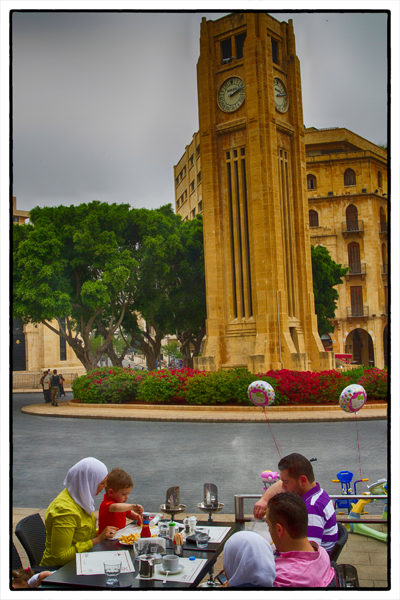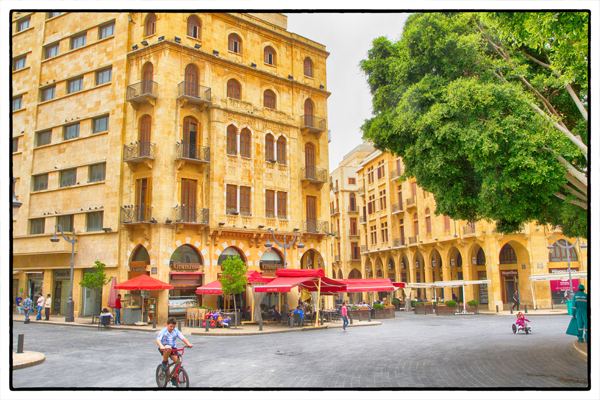If you’re hanging around Beirut’s Place de l’Ètoile, what better place to have lunch than the Place de l’Ètoile Café? Actually, I’m being a bit facetious. There is little distinction to the Place de l’Ètoile Café except, perhaps, that it is the last place former Prime Minister Rafiq Hariri dined before being blown up by a car bomb in February 2005. Other than that, the café could be anywhere—Paris, New York, Rome—with its odd international menu of hamburgers and pasta, Caesar salad and onion soup. Except they serve no alcohol. Which surprised my guide who had assured me we could get a beer here.
“Why don’t you serve beer?” he asked our rather-bored looking waiter.
We used to, the man said. But the café was recently purchased by a new owner, a decidedly Muslim owner who ordered alcohol to be taken off the menu. The waiter shrugged. “It’s a shame,” he said. “People like to have a glass of wine with their meal, but we cannot.”
The café, like the square, was mostly deserted. At one of the outside tables next to us a family was celebrating a young boy’s birthday. There were two Hello Kitty helium balloons tied to the chairs and the birthday boy was excitedly digging in to a plate of French fries while his father and an uncle puffed away on their nargilehs. Just a typical quiet Sunday afternoon in Beirut.



Recent Comments